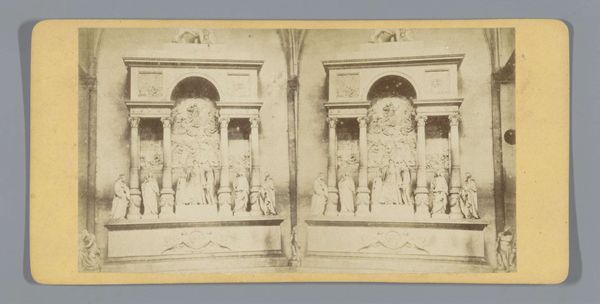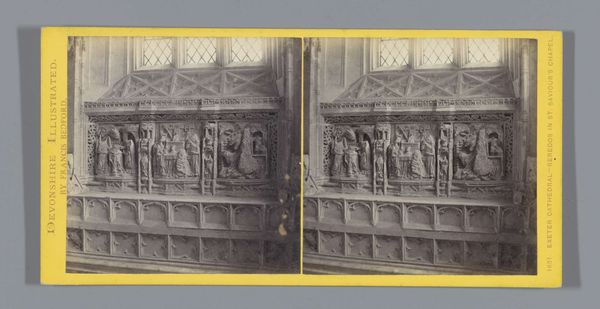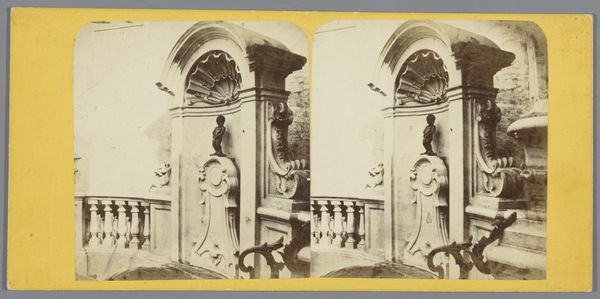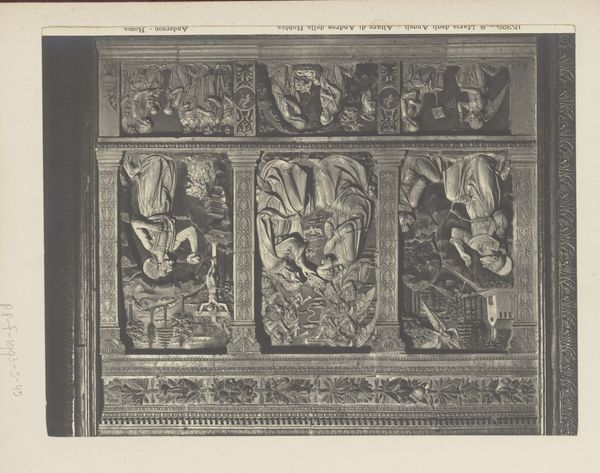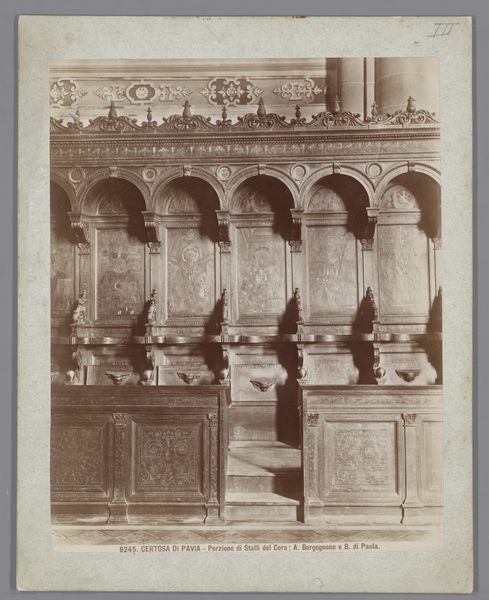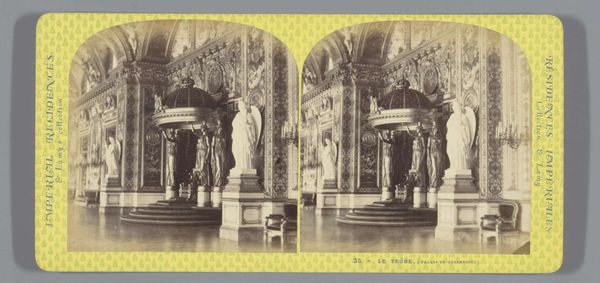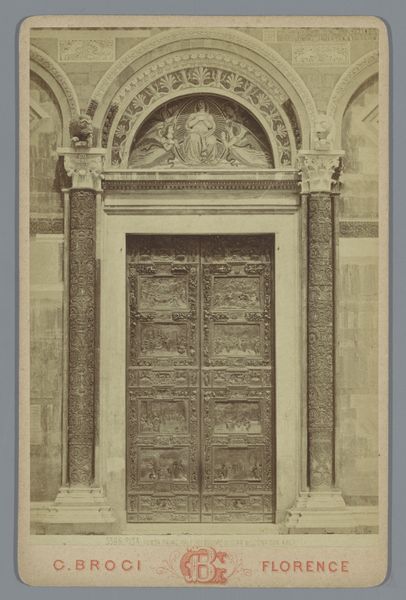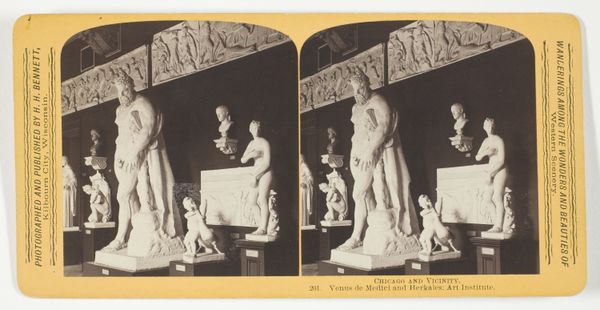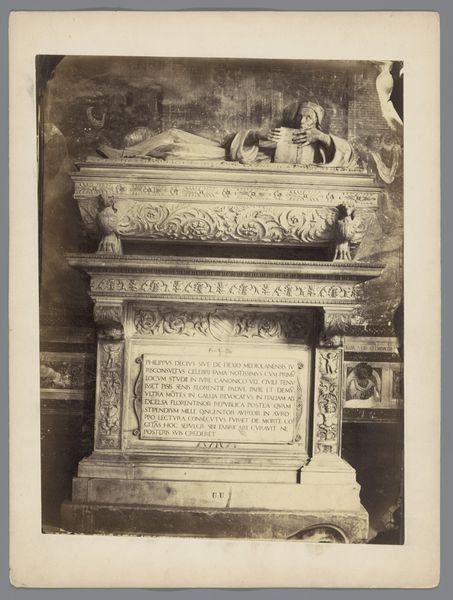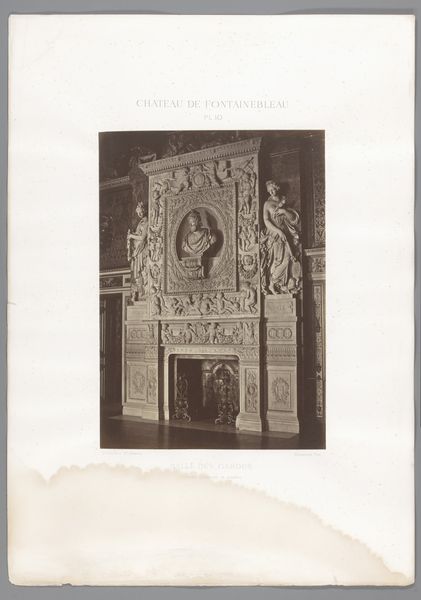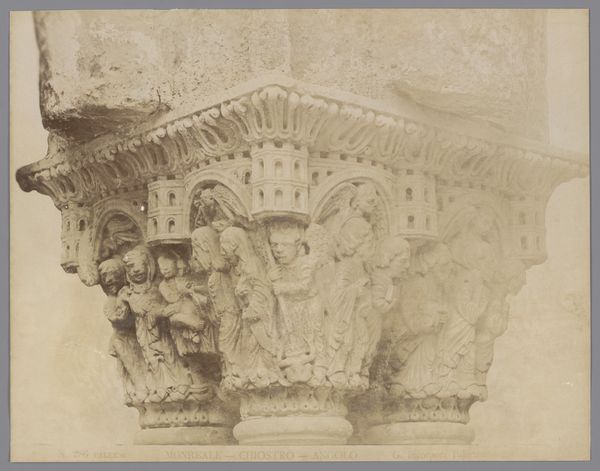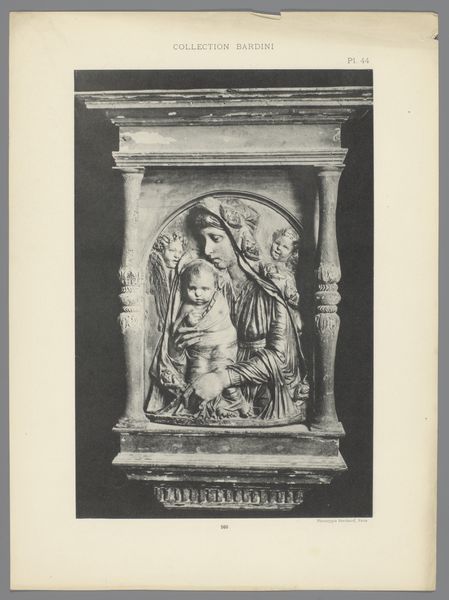
Graf van Foscari en een leeuw, gemaakt door Antonio Canova, van het grafmonument van paus Clemens XIII, Neues Museum, Berlijn 1868 - 1870
0:00
0:00
print, photography, sculpture, marble
#
portrait
# print
#
landscape
#
photography
#
sculpture
#
marble
Dimensions: height 87 mm, width 177 mm
Copyright: Rijks Museum: Open Domain
Curator: This photograph, dating from 1868 to 1870, captures Antonio Canova's sculpture, specifically the tomb of Foscari and a lion from the tomb monument of Pope Clement XIII. Editor: The lion is what really captures my attention; it projects such regal repose, strength made monumental in repose. Curator: I think this print is interesting precisely as a reproduction. The marble original was conceived to inspire awe. This image makes me consider the means of artistic distribution in the late 19th century: How did a broader public access art before mass tourism, and what processes made that access possible? Editor: This photograph seems to suggest a dialogue between power and fragility. While Pope Clement represents established religious power, it’s worthwhile to look at who is not represented. How were the experiences of the sculptors or laborers reflected, particularly in their relationship to the Church? Curator: Exactly, the creation of this monument was not solitary. Think about the quarries, the transportation, the workshops, and the politics of marble. Editor: I'm struck by the image’s engagement with the aesthetics of death and commemoration—particularly around figures like Pope Clement who influenced religious discourse. In terms of gender and politics, it becomes a fascinating meditation on the roles ascribed to men in religious leadership and their memorialization versus other figures in society who might never get these resources spent on remembering their names. Curator: Agreed, there is something powerful in noting how the image reduces complex social labor to a two-dimensional scene accessible to a wider audience, while inevitably distancing the viewer from the reality of its making. Editor: Reflecting on this, I realize that the tomb captures larger historical trends, memorializing figures and power structures and obscuring stories from other narratives in a similar period. Curator: Thinking of it that way does really allow one to start considering all of those unseen stories—beyond just the object.
Comments
No comments
Be the first to comment and join the conversation on the ultimate creative platform.
